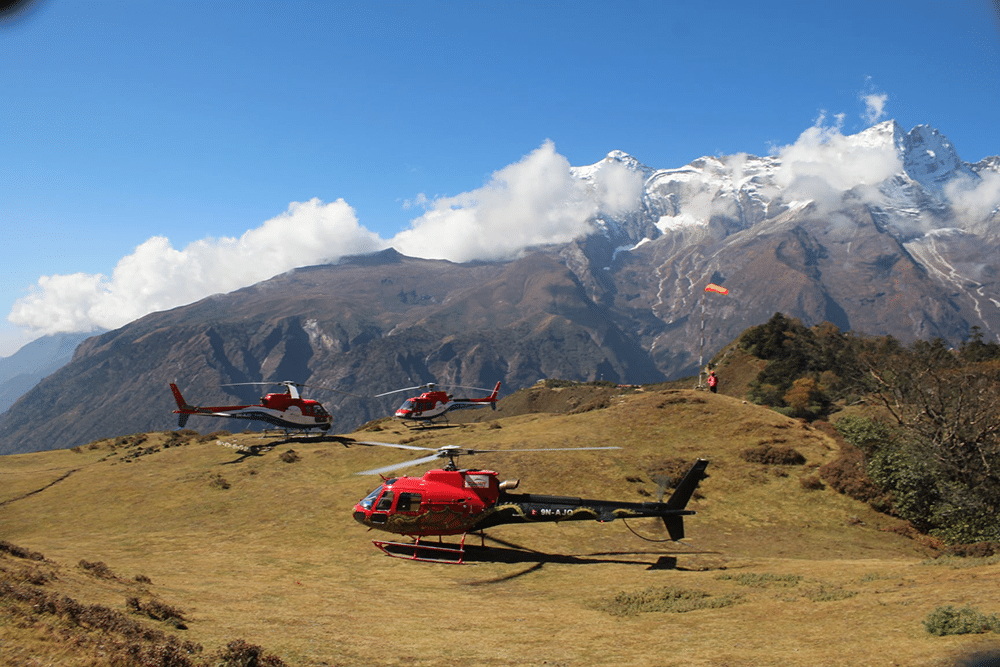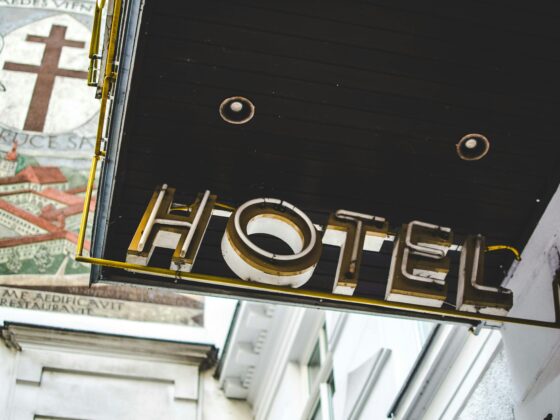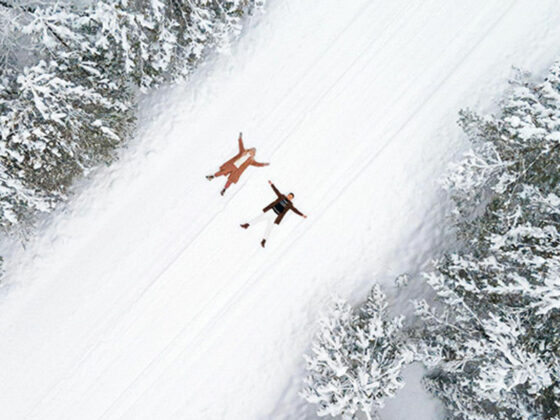For many travelers, standing face-to-face with Mount Everest is the ultimate bucket list dream. But trekking for days through rugged terrain and high altitudes isn’t practical for everyone. That’s where an Everest Base Camp helicopter tour comes in. In just a few hours, you can soar above the Himalayas, land near the world’s tallest peak, and witness breathtaking views.
This guide explains what to expect, from altitude and key stops to safety and costs, so you’re fully prepared for this once-in-a-lifetime experience. Let’s take a look at what’s in store for you above the clouds.
What is an Everest Base Camp Helicopter Tour?
An Everest Base Camp helicopter tour is a fast and scenic alternative to the traditional trek. It’s perfect for travelers who want to see Everest without the physical demands of hiking for days. Most tours are half-day to full-day adventures, typically 4 to 6 hours from start to finish.
How Does the Helicopter Tour Work?
The journey usually starts in Kathmandu, Nepal’s capital city. Some itineraries may start from Lukla depending on weather, group size, or operator logistics. After takeoff, the helicopter will climb steadily, offering stunning views of the Kathmandu Valley before heading east towards the Himalayas.
Group tours are the most common and cost-effective option. They usually have 4–5 passengers and follow a fixed route with designated stops. Private charters are also available for those who want a more exclusive experience, with flexibility in timing and photography opportunities. The tour includes multiple landings, so you can step out, take photos, and feel the thin air of being in the heart of the world’s highest mountain range. Depending on the package, stops may include Lukla, Kala Patthar, and Hotel Everest View.
Expect a mix of flying and short ground time at high altitude locations. Due to oxygen levels above 5,000 meters, landings at Kala Patthar are limited to 5–10 minutes. Pilots are trained to monitor passenger well-being and adjust the itinerary if needed.
Safety is our top priority. All helicopters are operated by licensed pilots experienced in high altitude flying. Aircraft are equipped with supplemental oxygen and emergency communication systems. Weather conditions are closely monitored, and flights may be rescheduled for safety.
In short, an Everest Base Camp helicopter tour is a thrilling and efficient way to experience the Himalayas. It combines the adventure of flying with the awe of being among the towering snow-capped peaks—all in a day.
Who Should Take This Tour?
This tour is perfect for travelers who want to see Mount Everest but can’t commit to the 12–14 days of the classic trek. If you’re limited by time, physical ability, or altitude concerns, this helicopter experience is a convenient alternative.
It’s also ideal for families with older children, elderly travelers, or those recovering from injuries. While the tour doesn’t require trekking fitness, passengers should be in good general health. If you have heart or respiratory conditions, consult your doctor before booking.
Altitude exposure is brief but real. The highest point—Kala Patthar—is over 5,500 meters. While the helicopter limits time at this altitude, those with a history of altitude sickness should take precautions. Hydration, rest, and avoiding alcohol the day before are key.
Age isn’t a barrier. Children over 5 and adults up to their 70s regularly take the tour. However, each passenger must be able to walk short distances and handle brief exposure to cold and windy conditions.
If you’re a photographer, adventurer, or just curious about the Himalayas, this tour delivers views without the physical strain. It’s also a great add-on for those already visiting Nepal and looking to elevate their trip—literally.
Ultimately, the Everest Base Camp helicopter tour is for those who want to experience the grandeur of the Himalayas in comfort, safety, and style.

Key Stops on the Everest Base Camp Helicopter Tour
The tour includes iconic stops like Lukla, the Everest Base Camp flyover, Kala Patthar, and Hotel Everest View for breakfast.
Stop 1 – Lukla Airport (Tenzing-Hillary Airport)
Your first stop is often Lukla, home to the world-famous Tenzing-Hillary Airport. Known for its short runway and dramatic mountain backdrop, Lukla is the traditional starting point for Everest treks. On the helicopter tour, this stop is for refueling or picking up additional passengers.
Landing here is an adventure in itself. The airport sits at 2,860 meters and is surrounded by steep cliffs and rugged terrain. Watching your pilot navigate the landing is part of the thrill. It’s also your first real taste of the Himalayan environment—crisp air, prayer flags fluttering, and yaks dotting the landscape.
You’ll usually spend 10–15 minutes on the ground. This short break is a great time to stretch your legs, take photos, and take in the atmosphere of this iconic gateway to Everest. You won’t trek from here, but you’ll get a feel of the starting point of thousands of climbers and trekkers.
Lukla also gives you a glimpse into Sherpa culture. You may see porters loading supplies or locals managing tea houses. It’s a living village, not just a tourist stop, and it adds cultural depth to your journey.
Keep in mind that the weather at Lukla can be unpredictable. Delays are possible, and pilots may adjust the itinerary for safety. Still, this stop is a memorable part of the tour and sets the tone for the adventure ahead.
Stop 2 – Everest Base Camp Flyover
The helicopter doesn’t land at Everest Base Camp (EBC) due to unstable terrain and safety regulations. Instead, you’ll enjoy a slow and breathtaking flyover that gives you a bird’s-eye view of this legendary staging ground for Everest summits.
From the air, you’ll see the colorful tents of climbers nestled against the Khumbu Glacier. The massive icefall with its jagged crevasses and towering seracs is clearly visible. This is the same route mountaineers take as they begin their ascent of the world’s highest peak.
The flyover is 5–10 minutes long and gives you ample time to take photos and video. Your pilot may circle the area to ensure both sides of the helicopter get a clear view. Keep your camera ready—this is one of the most iconic sights in the Himalayas.
You’ll also see Lhotse and Nuptse flanking Everest from the south. Snow, ice, and rock are surreal from up here. It’s a visual treat few get to experience without weeks of trekking.
Even without a landing, the flyover is an emotional high. You’re hovering above the base of the highest mountain on Earth – it’s humbling and exhilarating.
Stop 3 – Kala Patthar Flyover (Optional)
Kala Patthar is the highlight of the Everest helicopter tour. At 5,545 meters, this rocky outcrop has the best views of Mount Everest. It’s higher than Base Camp and right in front of the entire Everest massif.
Landings are not permitted here due to current regulations. Instead, all tours feature a flyover where the helicopter hovers or circles the area to give you the aerial views. It’s safe and rules-compliant while still giving you the views.
From the Kala Patthar flyover, you can see the summit of Everest, the Khumbu Glacier, and the surrounding giants Pumori and Ama Dablam. It’s a photographer’s paradise and a spiritual moment for many visitors.
As this section is done in flight, no special clothing for landing is required, but still dress warmly as the cabin temperature drops with altitude. Sunglasses and sunscreen are also recommended, as the thin air means stronger UV.
Not all tours will circle at Kala Patthar; sometimes more time is spent at Hotel Everest View if the conditions aren’t favorable. Either way, this flyover gets you closer to Everest than anywhere else without climbing.
Stop 4 – Hotel Everest View (Breakfast Stop)
After the high altitude thrill of Kala Patthar, the helicopter descends to Hotel Everest View for breakfast. Located at 3,880 meters near Namche Bazaar, this luxury lodge has stunning views of Everest and the surrounding peaks.
The hotel is famous for being the highest hotel in the world. It’s a popular acclimatization stop for trekkers and a scenic rest point for helicopter tours. The altitude is more manageable here, so it’s a comfortable place to relax and refuel. You’ll spend 30-45 minutes here. Enjoy a hearty breakfast – often eggs, toast, fruit, and tea – while taking in the views from the balcony. On clear days, Everest, Lhotse, and Ama Dablam will dominate the skyline.
This stop also gives you a chance to walk around, take photos, and interact with fellow travellers. The hotel grounds are dotted with rhododendron trees and colorful prayer flags, adding to the Himalayan charm.
The descent to this altitude helps your body recover from the brief exposure at Kala Patthar. It’s also a good time to rehydrate and see how you’re feeling before the return flight.
Hotel Everest View is more than a meal stop – it’s a highlight in its own right. The combination of comfort, scenery, and cultural ambiance makes it a memorable part of the tour.
What Can You See on the Helicopter Tour?
With Everest, glaciers, valleys, and Sherpa villages, the tour provides travelers with beautiful scenery and cultural glimpses of Himalayan life.
Aerial Views of the Himalayas
The flight offers a panoramic view of the world’s highest peaks. You’ll fly past iconic giants like Mount Everest, Lhotse, Nuptse, and Ama Dablam. The high altitude light makes the contrast between snow-capped summits and rock faces stunning – perfect for photography.
Visibility is seasonal. The best conditions are from March to May and September to November when the skies are clearest and the air is dry. Monsoon season (June-August) and winter (December-February) come with more cloud cover and weather variability.
Whether you’re chasing sunrise or just taking it all in, the aerial view is unbeatable.
Glaciers, Valleys, and Sherpa Villages
Beyond Everest itself, the tour offers scenic views of the Khumbu Glacier, the valleys carved by centuries of ice flows, and Sherpa villages like Namche Bazaar. As you fly past Tengboche Monastery, you’ll see how spiritual life and nature coexist in this remote part of the world.
These glimpses add cultural depth to the mountain views. It’s more than just a tour – it’s a window into Himalayan life.
How High Do You Go on an Everest Helicopter Tour?
The highest point you’ll reach is Kala Patthar at 5,545 meters (18,192 feet). This is higher than Everest Base Camp, which is at 5,364 meters. It’s one of the highest places non-climbers can go in Nepal.
Is Altitude Sickness a Concern?
While time at extreme altitudes is brief, altitude sickness can still be a risk. Symptoms may include headache, dizziness, and nausea. To minimize this:
- Stay hydrated
- Avoid alcohol the day before
- Follow your pilot or guide’s instructions
Always consult your doctor before traveling to high altitudes. Although helicopters carry supplemental oxygen, no tour is risk-free at high elevations.
What to Pack and Wear
Dressing properly ensures comfort and safety. Here’s what you should include in your packing list:
Clothing and Gear
Temperatures can vary greatly, so dress in layers. Essentials include:
- Warm, windproof jacket
- Thermal base layers
- Gloves and a hat
- Sunglasses with UV protection
- Sunscreen and lip balm
- A good camera or smartphone
Wear sturdy shoes in case of snow or uneven terrain at landing spots.
Documents and Permits
Carry:
- Passport
- Booking confirmation or ticket
- TIMS card (Trekkers’ Information Management System)
- Sagarmatha National Park Permit
Your tour operator will usually arrange the required permits, but double-check in advance.
Safety, Weather, and Best Time to Go
Helicopter safety, weather conditions, and seasonal timing are crucial factors. Here’s what you need to know:
Is the Everest Helicopter Tour Safe?
Yes – when operated by licensed, experienced companies. Professional pilots are trained in mountain flying and use modern helicopters equipped for emergency situations, including supplemental oxygen if needed.
Make sure your tour company complies with local aviation safety standards and has good reviews.
Weather Conditions and Flight Cancellations
Clear weather is essential for visibility and safety. If heavy clouds, wind, or snowfall interferes with your flight, your flight may be delayed or cancelled. Most operators will offer rebooking or a refund depending on the situation.
Always have a buffer day in your itinerary in case rescheduling is needed.
Best Time of Year for Clear Views
- Best Months: March–May and September–November
- Avoid: Monsoon (June–August) and deep winter (December–February)
In the best months, the skies are usually clear in the mornings with stable flying conditions.’
How Much Does it Cost?
Prices vary depending on season, group size, and operator. On average:
- Group tours: $900–$1,200 USD per person
- Private tours: $3,000–$4,500+ USD total
Inclusions usually cover landing fees, breakfast at Hotel Everest View, national park permits, and round-trip flights from Kathmandu.
How to Choose a Reputable Operator
- Look for certified operators with high ratings and verified reviews
- Ask about cancellation policies, oxygen availability, and emergency planning
- Choose companies that provide clear itineraries and communication
- Always confirm what’s included in the price to avoid surprises.
Is the Everest Helicopter Tour Worth It?
An Everest Base Camp helicopter tour is a once-in-a-lifetime experience, combining stunning views with unique high-altitude stops. From flying above the Khumbu Glacier to landing near the iconic base camp, every moment is unforgettable. The tour gives you a rare chance to see the Himalayas without the trek.
If you want adventure with comfort and great photo opportunities, this tour has it all. Just remember to prepare for the altitude and dress in layers. With the right mindset and planning, you’ll have memories that last a lifetime.
Ready to see Everest like few others do? Book your tour today and experience the top of the world – without the climb.
An Everest Base Camp helicopter tour is a rare chance to experience the Himalayas in comfort. Use these tips to prepare well, choose wisely, and make the most of your journey for unforgettable memories at the top.
More Tips to Grow Your Business
Revfine.com is the leading knowledge platform for the hospitality and travel industry. Professionals use our insights, strategies, and actionable tips to get inspired, optimize revenue, innovate processes, and improve customer experience.
Explore expert advice on management, marketing, revenue management, operations, software, and technology in our dedicated Hotel, Hospitality, and Travel & Tourism categories.








